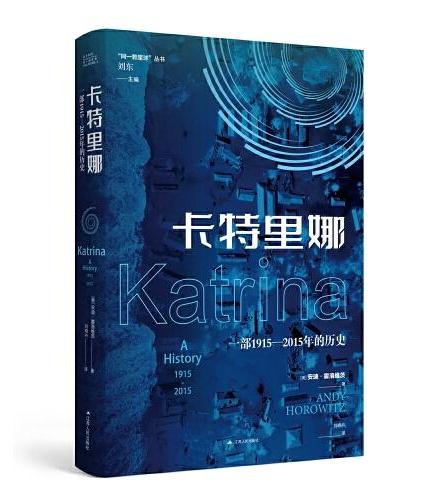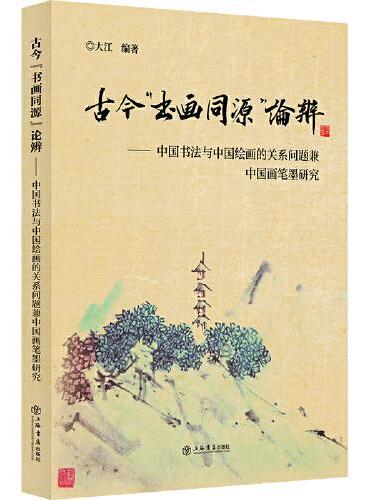新書推薦:

《
加加美高浩的手部绘画技法 II
》
售價:NT$
407.0

《
卡特里娜(“同一颗星球”丛书)
》
售價:NT$
398.0

《
伟大民族:从路易十五到拿破仑的法国史(方尖碑)
》
售價:NT$
857.0

《
古今“书画同源”论辨——中国书法与中国绘画的关系问题兼中国画笔墨研究
》
售價:NT$
602.0

《
《日本文学史序说》讲演录
》
售價:NT$
332.0

《
无尽的海洋:美国海事探险与大众文化(1815—1860)
》
售價:NT$
454.0

《
治盗之道:清代盗律的古今之辨
》
售價:NT$
556.0

《
甲骨文丛书·剑桥世界暴力史(第一卷):史前和古代世界(套装全2册)
》
售價:NT$
959.0
|
| 編輯推薦: |
1. 纳米薄膜材料在国际上近10年来一直是科学研究的热门领域,本书覆盖各种纳米薄膜材料的制备技术,重点阐明生长机制以及生长条件与纳米薄膜材料性能之间的关联性,并介绍相关的制备技术在纳米薄膜材料和纳米器件中的应用实例。
2. 除了传统的制备技术如溶胶-凝胶法、电子束沉积等,还包含很多近10多年来新兴的纳米薄膜制备技术如高分子辅助沉积法、3D打印等国内外在该领域的新进展。
3. 本书注重基本概念和应用实例并重,充分考虑不同层次读者的需求。在每个章节先介绍一种制备技术或器件应用的基本概念和工作原理,这会有利于本科生之类初级程度的读者,之后会介绍具有一定深度的纳米薄膜结构形成机制及器件应用实例,这将吸引有一定科研经验的高级读者。
4. 本书会使读者在读了本书之后对本领域能具备一个比较广阔的视野,将从本书中学到物理知识应用到其他领域中去。
|
| 內容簡介: |
|
本书总结了纳米薄膜材料的国内外研究*进展,既详细地介绍了纳米薄膜材料的制备方法,又介绍了它们在电子器件领域的应用。系统阐述了薄膜及纳米结构的一系列制备技术,不仅包括溶胶凝胶法、MOCVD、电子束沉积、磁控溅射等传统技术,还包括近年来新发展起来的高分子辅助沉积法、3D打印、液相-电子束诱导沉积等技术。此外,本书还对纳米薄膜及其它纳米结构的一些典型应用做了介绍,并给出实例,包括磁性薄膜的应用、氧化物薄膜在燃料电池领域的应用、相变材料在存储器领域的应用和柔性薄膜器件等。本书适合材料、微电子等相关专业的研究生、科技人员和教学人员使用。
|
| 關於作者: |
|
林媛教授于1999年在中国科技大学获得凝聚态物理学博士,之后分别在北京中科院物理所、美国休斯顿大学和美国洛萨莫斯国家实验室进行博士后研究,并在美国Intel公司担任高级工程师。目前,她是电子科技大学的长江学者特聘教授。她在薄膜和纳米材料领域研究了近20年,包括使用脉冲激光沉积法、磁控溅射法和化学溶液法制备各种薄膜材料并开展其性能和应用的研究。林媛教授已发表90余篇学术论文和获得授权13项专利。
|
| 目錄:
|
List of Contributors XIII
1 Pulsed Laser Deposition for Complex Oxide Thin Film and Nanostructure 1
Chunrui Ma and Chonglin Chen
1.1 Introduction 1
1.2 Pulsed Laser Deposition System Setup 2
1.3 Advantages and Disadvantages of Pulsed Laser Deposition 3
1.4 TheThermodynamics and Kinetics of Pulsed Laser Deposition 3
1.4.1 LaserMaterial Interactions 4
1.4.2 Dynamics of the Plasma 5
1.4.3 Nucleation and Growth of the Film on the Substrate Surface 5
1.5 Monitoring of Growth Kinetics 8
1.5.1 Introduction and RHEED Studies 8
1.5.2 Growth Kinetics Studies by Surface X-ray Diffraction 9
1.6 Fundamental Parameters in Thin Film Growth 10
1.6.1 Substrate Temperature 10
1.6.2 Background Gas Pressure 10
1.6.3 Laser Fluence and Ablation Area 11
1.6.4 TargetSubstrate Distance 11
1.6.5 Post-Annealing 12
1.6.6 Lattice Misfit 12
1.7 Pulsed Laser Deposition for Complex Oxide Thin Film Growth 13
1.7.1 Pulsed Laser Deposition for SuperconductorThin Film 14
1.7.2 Pulsed Laser Deposition for Ferroelectric Thin Films 14
1.7.3 Pulsed Laser Deposition for Ferromagnetic Thin Film 15
1.7.4 Pulsed Laser Deposition for Multiferroics Thin Film 15
1.7.5 Interface Strain Engineering the Complex Oxide Thin Film 16
1.7.5.1 Thickness Effect 16
1.7.5.2 Substrate Effect 17
1.7.5.3 Post-Annealing 21
1.8 Pulsed Laser Deposition for Nanostructure Growth 23
1.8.1 Self-Assembled Nanoscale Structures 23
1.8.2 Geometrically Ordered Arrays 23
1.9 Variation of Pulsed Laser Deposition 24
1.10 Conclusion 24
References 25
2 Electron Beam Evaporation Deposition 33
ZhongpingWang and Zengming Zhang
2.1 Introduction 33
2.2 Electron Beam Evaporation System 35
2.2.1 Heating Principle and Characters of Electron Beams 35
2.2.1.1 Heating Principle of Electron Beams 35
2.2.1.2 Characters of Electron Beams 36
2.2.2 Equipments of Electron Beam Source 37
2.2.2.1 Filament and Electron Emission 37
2.2.2.2 Electron Beam Control 38
2.2.2.3 Power Supply, Crucibles, and Feed Systems 39
2.2.2.4 Source Materials 40
2.2.3 Application of Electron Beam Evaporation 43
2.2.3.1 Cooling of Electron Beam Gun 43
2.2.3.2 Evaporation of Source Materials by Electron Beam 43
2.2.3.3 Vacuum Deposition Process of Electron Beam Evaporation 44
2.2.3.4 Attention andWarning for Electron Beam Evaporation 45
2.3 Characterization of Thin Film 45
2.3.1 Surface Morphology by AFM 46
2.3.2 Thickness Measurement by Spectroscopic Ellipsometry 47
2.4 Summary 53
Acknowledgments 53
References 53
3 Nanostructures and Thin Films Deposited with Sputtering 59
Weiqing Yang
3.1 Introduction 59
3.2 Nanostructures with Sputtering 60
3.2.1 Oxide Nanostructures 61
3.2.1.1 Needle-Shaped MoO3 Nanowires 61
3.2.1.2 Bi2O3 Nanowires 64
3.2.2 Nitride Nanostructures 65
3.2.2.1 Graphitic-C3N4 Nanocone Array 65
3.2.2.2 InAlN Nanorods 68
3.3 Thin Films Deposited with Sputtering 71
3.3.1 Metal AlloyThin Films 73
3.3.1.1 LaNi5 AlloyThin Films 73
3.3.1.2 NiMnIn AlloyThin
Films 74
3.3.2 Composite Metal Oxide Thin Films 75
3.3.2.1 BiFeO3BaTiO3 BilayerThin Films 75
3.4 Summary 76
Acknowledgments 77
References 77
4 Nanostructures and Quantum Dots Development with Molecular Beam Epitaxy 81
Wen Huang
4.1 Introduction 81
4.2 Technology of MBE 82
4.2.1 The Physics of MBE 83
4.2.2 MBE Growth Mechanisms 86
4.2.2.1 Two-Dimensional 2D MBE Growth Mechanism 87
4.2.2.2 Three-Dimensional 3D MBE Growth Mechanism 88
4.2.2.3 StranskieKrastanow 3D Growth Mechanism 90
4.3 Nanoheterostructures Fabricated by Molecular Beam Epitaxy 91
4.3.1 Semiconducting Oxide Heterostructures Grown by Laser Molecular Beam
Epitaxy 91
4.3.2 Strain-Induced Magnetic Anisotropy in Highly Epitaxial Heterostructure by
LMBE 96
4.4 Quantum Dots Development with Molecular Beam Epitaxy 101
4.5 Summary 103
Acknowledgments 104
References 104
5 Carbon Nanomaterials and 2D Layered Materials Development with Chemical Vapor
Deposition 105
Taisong Pan
5.1 Introduction 105
5.2 Carbon Nanotube Synthesis by Chemical Vapor Deposition 106
5.2.1 Overview of CVD Process of Carbon Nanotube Growth 106
5.2.2 Control of Carbon Nanotube Structure 108
5.2.3 The Alignment of Carbon Nanotube Array 110
5.3 Graphene Synthesis by Chemical Vapor Deposition 112
5.3.1 Overview of CVD Process of Graphene Synthesis 112
5.3.2 Control of Graphene Quality 113
5.4 Metal Dichalcogenide Synthesis by Chemical Vapor Deposition 115
5.4.1 Overview of CVD Process of Metal Dichalcogenides 115
5.4.2 Growth Control of Metal Dichalcogenides in Chemical Vapor Deposition 118
5.5 Summary 119
References 120
6 Nanostructures Development with Atomic Layer Deposition 123
Hulin Zhang
6.1 Introduction 123
6.2 Reaction Mechanisms 125
6.2.1 Thermal ALD 125
6.2.2 Catalytic ALD 127
6.2.3 Metal ALD 129
6.3 Nanostructures Based on ALD 131
6.3.1 Nanolaminates and Nanofilms 132
6.3.2 Nanostructures as Templates 132
6.3.3 Nanostructured Modification 135
6.4 Summary 136
Acknowledgments 137
References 138
7 Nanomaterial Development with Liquid-Phase Epitaxy 141
Weiqing Yang
7.1 Introduction 141
7.2 Hydrothermal Method 142
7.2.1 Development of Hydrothermal Method 142
7.2.2 Microwave-Assisted Hydrothermal Method 143
7.2.2.1 Microwave-Assisted Preparation of Nanostructures in Aqueous Solution
144
7.3 Nanostructures Fabricated Using LPE 147
7.3.1 CoreShell Structures 147
7.3.2 The Epitaxial Preparation Methods of CoreShell
Structures 148
7.3.2.1 General Nanochemical Approaches to Prepare Epitaxial CoreShell UCNPs with a Single Shell Layer 150
7.3.2.2 Layer-by-Layer Approach to Prepare CoreMultishell
UCNPs with MonolayerThickness Precision 153
7.3.2.3 Mesoporous Silica Coating 153
7.3.2.4 Coupling of UCNPs with Plasmonics Using CoreShell
Architecture 154
7.4 Summary 156
Acknowledgments 156
References 156
8 Nanostructural Thin Film Development with Chemical Solution Deposition 159
Yanda Ji and Yuan Lin
8.1 Introduction 159
8.2 Precursor Solution Preparation 159
8.2.1 Chemical Strategies for Precursor Solutions 160
8.2.2 SolGel Method 160
8.2.3 Metal-Organic Deposition 161
8.2.4 Polymer-Assisted Deposition 161
8.3 Coating 162
8.4 Thermal Treatment 163
8.5 Control of the Microstructures in Thin Films Prepared by CSD Techniques 164
8.5.1 Thermodynamics for CSD-Delivered Thin Films 164
8.5.2 EpitaxialThin Film Growth 166
8.6 Examples of NanostructuralThin Films Prepared by CSD Techniques 167
8.6.1 SolGel-Delivered Nanostructured Materials 167
8.6.2 MOD of Nanostructured Materials 168
8.6.3 PAD-Delivered Nanostructured Materials 168
8.7 Summary 174
References 175
9 Nanomaterial Development Using In Situ Liquid Cell Transmission Electron
Microscopy 179
Xin Chen,Wangfan Zhou, Debiao Xie, and Hongliang Cao
9.1 Introduction 179
9.2 The Technological Development of In Situ Liquid Cell TEM 179
9.2.1 The Advent of the Modern In Situ Liquid Cell 180
9.2.2 Recent Technological Development of Liquid Cells 180
9.2.3 Commercial Liquid Cells 183
9.3 Nanomaterial Development Using In Situ Liquid Cell TEM Technology 185
9.3.1 Nanomaterial Growth Induced by Electrical Bias 185
9.3.2 Nanomaterial Growth Induced by Irradiation 187
9.3.3 Nanomaterial Formation Induced by Heating 189
9.3.4 Further Nanomaterial Development Results from In Situ Liquid Cell TEM 190
9.4 Summary and Outlook 191
Acknowledgments 191
References 192
10 Direct-Writing Nanolithography 195
Min Gao
10.1 Introduction 195
10.2 Electron Beam Lithography 195
10.3 Focused Ion Beam Lithography 198
10.4 Gas-Assisted Electron and Ion Beam Lithography 200
10.5 SPM Lithography 201
10.6 Dip-Pen Lithography 205
10.7 Summary 206
Acknowledgments 207
References 207
11 3D Printing of Nanostructures 209
Min Gao
11.1 Introduction 209
11.2 3D Printing Processes 209
11.3 Types of 3D Printing 210
11.3.1 Stereolithography 210
11.3.2 Fused Deposition Modeling 211
11.3.3 Selective Deposition Lamination 212
11.3.4 Selective Laser Sintering 213
11.3.5 3D Inkjet Printing 214
11.3.6 Multijet Modeling 214
11.4 3D Direct LaserWriting by Multiphoton Polymerization 214
11.5 3D Printing Applications 217
11.5.1 Medical Applications 217
11.5.2 Industrial Manufacturing 218
11.5.3 Daily Consumption 219
11.5.4 Limitation of 3D Printing Applications 219
11.6 Summary 219
Acknowledgments 220
References 220
12 Nanostructured Thin Film Solid Oxide Fuel Cells 223
Alex Ignatiev, Rabi Ebrahim, Mukhtar Yeleuov, Daniel Fisher, Xin
Chen,NaijuanWu, and Serekbol Tokmoldin
12.1 Introduction 223
12.2 Solid Oxide Fuel Cells 223
12.2.1 Thin Film Solid Oxide Fuel Cell Fabrication 225
12.2.2 Thin Film Solid Oxide Fuel Cell Testing 231
12.2.3 Thin Film Fuel Cell Stack Development and Testing 234
12.3 Summary 237
Acknowledgments 237
References 237
13 Nanostructured Magnetic Thin Films and Coatings 239
Goran Rasic
13.1 Introduction 239
13.2 High-Frequency Devices 240
13.2.1 Ferromagnets 241
13.2.2 Coercivity 242
13.2.3 Magnetic Losses 243
13.2.4 Nanoscale Methods of Loss Reduction 244
13.2.5 Manufacturing Considerations 244
13.2.6 Coercivity Reduction in Surface-Patterned Magnetic Thin Films 245
13.3 Magnetic Information Storage Devices 251
13.3.1 Superparamagnetic Limit 252
13.3.2 Signal-to-Noise Ratio 253
13.3.3 Present-Day Solutions 253
13.3.4 Bit Patterned Media 254
13.3.5 Manufacturing Considerations 255
13.3.6 Patterned Media for Magnetic Data Storage 256
13.4 Summary 261
Acknowledgments 261
References 262
14 Phase Change Materials for Memory Application 267
LiangcaiWu and Zhitang Song
14.1 Introduction 267
14.2 Ge2Sb2Te5 and Its Properties Improvement 268
14.2.1 Ge2Sb2Te5 Phase Change Material 268
14.2.2 N-Doped Ge2Sb2Te5 Material 270
14.2.3 C-Doped Ge2Sb2Te5 Material 272
14.2.3.1 Film Properties and Microstructure Characteristics 272
14.2.3.2 Reversible Phase Change Characteristics of C-Doped Ge2Sb2Te5 274
14.3 High-Speed and Lower-Power TiSbTe Materials 277
14.3.1 Film Properties and Microstructure Characteristics 277
14.3.1.1 Ti-Doped Sb2Te Materials 277
14.3.1.2 Ti-Doped Sb2Te3 Materials 278
14.3.2 Reversible Phase Change Characteristics of TST Alloy 280
14.4 Summary 283
Acknowledgments 283
References 283
15 Nanomaterials and Devices on Flexible Substrates 285
Hulin Zhang
15.1 Introduction 285
15.2 Nanomaterials on Flexible Substrates 286
15.2.1 Nanomaterials Synthesized Directly on Flexible Substrates 286
15.2.2 Nanomaterials Transferred on Flexible Substrates 290
15.3 Devices on Flexible Substrates 292
15.3.1 Printing Electronics on Flexible Substrates 293
15.3.2 Biointegrated Electronics on Flexible Substrates 298
15.4 Summary 300
Acknowledgments 301
References 301
Index 305
|
|










